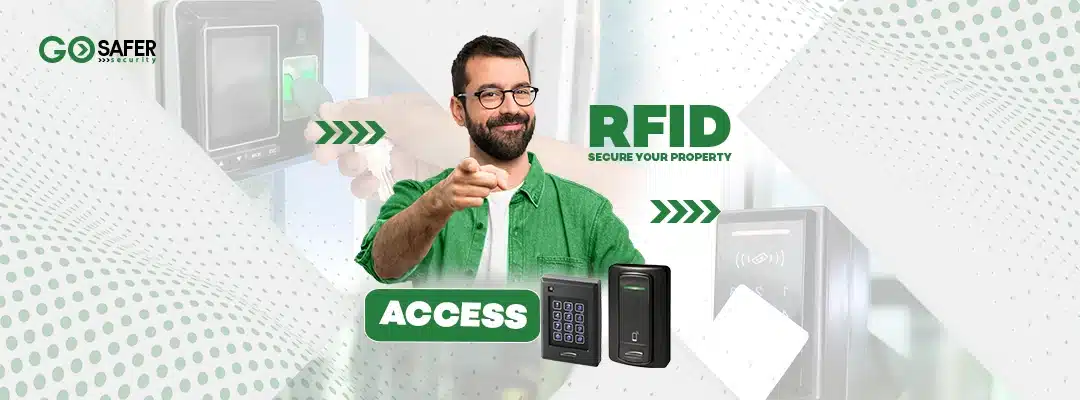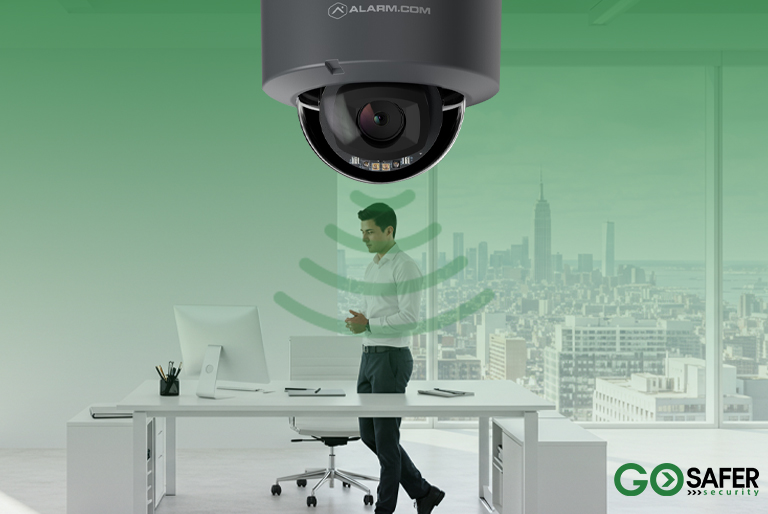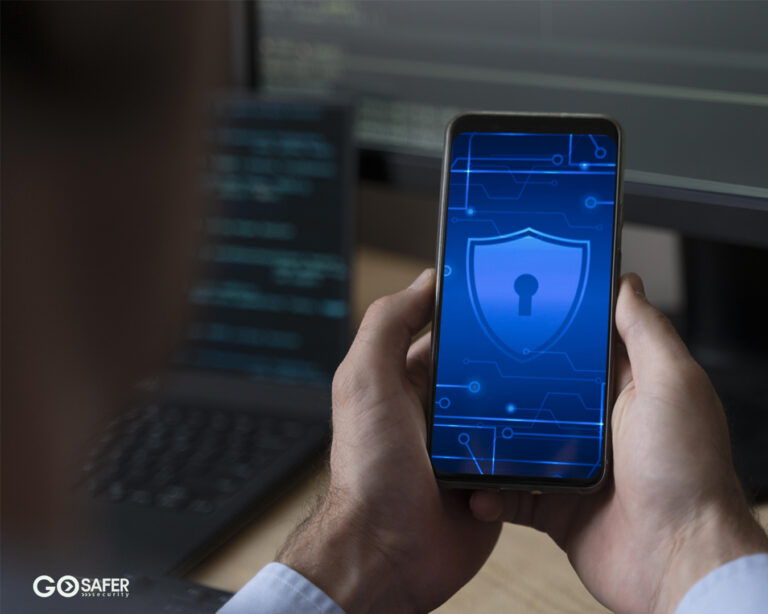Choosing the right access control RFID system to secure your property entry points is an important decision that should not be taken lightly. With the right information and a detailed evaluation, you can make sure that your security system is tailored to the specific needs of your property and will provide reliable protection for your assets.
In this article, we will explore the different aspects of access control RFID systems, from the types of readers and tags to the different levels of security and how to ensure that your system is optimized for maximum efficiency and effectiveness. By the end of this article, you will have a comprehensive understanding of the various access control RFID systems available and be well-equipped to make an informed decision.
Table of Contents
ToggleWhat are the Benefits of Implementing an RFID Access Control System?
When it comes to securing property entry points, implementing an RFID access control system can offer numerous benefits. Firstly, the use of unique RFID tags and encrypted data enhances security, making it difficult for unauthorized access to occur. Second, access control management is streamlined, allowing for real-time monitoring, restricting access, and revoking access privileges. This helps ensure that individuals only access the areas they need to be in.
Another benefit of implementing an RFID access control system is cost-saving. Physical keys or cards often get lost, stolen, or duplicated, costing the property owner money to replace them. With RFID tags, individuals are less likely to lose them, and the system can easily revoke access privileges when necessary.
An RFID access control system also provides improved audit trails that can be utilized for reporting purposes, which is essential when tracking who accessed what and when. Additionally, RFID-enabled devices like key fobs and cards increase convenience for users and offer scalability and flexibility for future growth.
Overall, choosing the right access control RFID system is crucial to ensure maximum security for your property entry points. Therefore, it is essential to consider factors like the type of property you own, the number of entry points, and the level of security required.
Understanding How RFID Access Control Systems Work
RFID access control systems have become increasingly popular in modern security management. These systems use radio waves to communicate between a reader and an RFID tag to allow or deny access to a specific area. They provide a convenient and efficient method for granting access while maintaining high levels of security. To fully comprehend and implement these systems, it is essential to understand how they work.
-
-
RFID stands for Radio Frequency Identification
-
-
-
RFID access systems use radio waves to communicate between RFID tags and RFID readers
-
-
-
When an RFID tag is within range of a reader, the reader can read the tag’s data and grant or deny access based on the information
-
-
RFID access control systems can be integrated with other security features, such as cameras and alarm systems
- RFID access control systems can be used to increase home security by providing a secure method for granting access to the necessary people
Unlocking the Potential of NFC-Enabled Devices
In the context of choosing the right access control RFID system to secure property entry points, NFC-enabled devices offer a convenient and cost-effective solution. Here are some points to consider:
- NFC technology provides secure, short-range communication between devices, making it an ideal option for access credentials.
- Using smartphones or other NFC-enabled devices as access credentials eliminates the need for separate key cards or fobs, reducing costs and increasing convenience.
- When choosing an access control system, consider the type of credentials you want to use. If you want to incorporate NFC-enabled devices, ensure that the system supports this technology.
- Look for a system that offers strong security features, such as encrypted data transmission and controlled access permissions.
- Consider the size and complexity of your property and choose a system that can accommodate your needs. For example, a cloud-based system may be more suitable for a larger property with multiple access points.
- Finally, ensure that the system you choose is compatible with your existing infrastructure and can be easily integrated with your other security systems for seamless operation.
RFID Reader & Tag: The Basics of Radio-Frequency Identification
Radio-Frequency Identification (RFID) is a technology that uses readers and tags to capture and store data. RFID readers are devices that can read information stored on RFID tags.
These tags can be attached to objects such as key cards, key fobs, and even people. There are two types of RFID tags: passive and active. Passive tags do not have their own power source, so they need to be activated by an external source, such as an RFID reader.
Active tags, on the other hand, have their own power supply and can transmit data over greater distances. RFID technology has become increasingly popular due to its ability to quickly track and store data.
How to Choose the Right RFID Technology for Your Access Control System
RFID technology has become a popular and effective way to control access to buildings, offices, and even homes. However, with so many different types of RFID technologies available in the market today, it can be challenging to choose the right one for your access control system.
Whether you’re looking to upgrade an existing system or install a new one from scratch, here are some tips on how to choose the right RFID technology for your needs.
-
-
Evaluate your security needs and budget
-
-
-
Determine the appropriate frequency for your application (low, high, or NFC)
-
-
-
Choose between passive and active RFID tags based on range requirements
-
-
-
Research available RFID readers, controllers, and software to find a compatible solution
-
-
-
Consider integration with other security systems, such as cameras or alarms
-
Key Fob, NFC, & RFID Cards: The Pros & Cons of Different Credentials
When deciding on the most suitable credentials for your access control system, it’s essential to compare key fobs, NFC, and RFID cards. Here are some of the key advantages and drawbacks of each:
Key Fobs
-
-
Pros: Small and portable, easy to attach to keychains, convenient for users.
-
-
-
Cons: More expensive than RFID cards, can be lost or damaged and may require replacement.
-
NFC-enabled Devices
-
-
Pros: Contactless access, streamlined management, enhanced security with multi-factor authentication, no need for separate credentials.
-
-
-
Cons: Requires additional infrastructure, not all devices are NFC-compatible, may involve higher investment costs.
-
RFID Cards
-
-
Pros: Cost-effective, widely used, customizable with branding or additional information, easy to replace if lost or damaged.
-
-
-
Cons: Susceptible to wear and tear, can be cloned if not secured properly, less advanced than NFC technology.
-
By evaluating these pros and cons, you can make an informed decision on the best credentials for your access control system, ensuring a balance of convenience, security, and cost-effectiveness.
What Are the Different Types of RFID Systems & How Do They Operate?
RFID stands for radio frequency identification, which is basically a way to wirelessly transmit data without a physical connection. RFID is ideal for applications like access control management and asset tracking.
So what does this have to do with your home? RFID technology can be used in things like automatic doors, car access, and payment systems. Here’s how RFID systems operate:
- When an RFID-enabled device comes within range of an RFID reader, the reader automatically identifies that device and captures its unique ID number.
- The device and its corresponding ID number are then stored in a database that can be accessed whenever it’s needed.
As technology advances, RFID is finding its way into more and more aspects of our lives. Here are some examples of how RFID could impact your home:
- Automatic Doors: Instead of pulling up to a door, just hold your card in front of it and the door opens.
- Car Access: Instead of keeping an extra key for your car, you can use a special RFID-enabled key to gain access.
- Home Entry: Instead of just a key, you could have an RFID-enabled card that unlocks your front door, an RFID-enabled wristband that unlocks the front door, and even a fingerprint lock that unlocks your front door.
In the future, RFID has the potential to change the way we interact with our environment, allowing us to go hands-free and more conveniently.
How to Choose Between Low Frequency, High Frequency, & NFC Access Control
While newer, high-tech methods of access control like RFID are getting plenty of attention, they aren’t the only access control methods available. In fact, there are still a few protocols that have been around for decades and that have proven to be effective, including the following:
Low Frequency: Low Frequency (LF) access control systems are relatively secure, being able to work up to 100 feet away. They are difficult to penetrate, and signatures don’t fade or wear off. Unlike newer, high-tech access control methods, LF methods aren’t subject to interference. However, LF systems can be pricey to install, making them an impractical choice for larger facilities.
HF: High Frequency (HF) access control systems work up to 300 feet away and have several advantages over LF systems, such as being much cheaper and offering better protection. Along with being less expensive, HF readers can also work with a number of RFID cards, which LF systems can’t read. Another plus is that HF systems require no power, so they’re completely portable. However, HF cards can be stolen, and signature fading and wear are issues.
One-time Password Authentication: One-time Password authentication, or OTP authentication, is oftentimes referred to as two-factor authentication, partially because a user needs two distinct pieces of information to authenticate their account: something they know and something they have. Examples of something they know include a password, PIN, or a passphrase. Something they have could be a debit card or a smartphone, and something they’re (like an iris scan or their fingerprint) are examples that fall into the something they’re category.
While we didn’t discuss iris scans or fingerprint scanners here, it is worth mentioning that biometric authentication is becoming an increasingly popular method of access control.
NFC: Near Field Communication (NFC) is an access control method that uses radio waves to communicate with reading devices. It works within a couple of inches of the reading and authentication device. Some key fobs are just NFC readers, meaning that users can authenticate their account simply by tapping their fob on the NFC reader.
NFC access control systems have many advantages over older methods, such as being cheaper to set up and easier to install. NFC systems also offer a higher level of security since they require a physical object to be present in order to authenticate.
How to Leverage RFID Door Lock Systems for Maximum Security
-
-
Integrate RFID door lock systems with additional security features, such as cameras or alarms
-
-
-
Implement strict access control policies and procedures
-
-
-
Regularly review and update user access permissions
-
-
-
Monitor and maintain your RFID door lock system to ensure proper functionality
-
What Are the Best Practices for Managing Access Control with RFID?
-
-
Establish clear access control policies and procedures
-
-
-
Regularly review and update user access permissions
-
-
-
Monitor system usage and performance to identify potential issues
-
-
-
Train staff on the proper use of RFID technology and access control protocols
-
Gaining Access with RFID Technology: How to Use Active & Passive Tags
-
-
Active tags: suitable for long-range applications, have their own power supply, can transmit data proactively
-
-
-
Passive tags: rely on external power from RFID readers, have a shorter read range, suitable for basic access control
-
-
-
Choose the appropriate type of tag based on your range and data requirements
-
What Are the Components of an Effective Access Control System?
-
-
RFID readers and tags for secure communication
-
-
-
Access control software to manage permissions and monitor usage
-
-
-
Power supply and control panel for system operation
-
-
-
Integration with other security systems, such as cameras or alarms, for comprehensive protection
-
Understanding the Power Supply, Control Panel, & Security Features of RFID Access Systems
-
-
The power supply provides energy to RFID readers and controllers
-
-
-
The control panel manages the operation of the access control system, including granting and revoking access
-
-
-
Security features, such as encryption and unique RFID chips, help protect against unauthorized access and data breaches
-
Conclusion
In conclusion, we’ve learned that having the right access control RFID access system is crucial to securing your property’s entry points. It’s important to consider factors such as the type of building, the number of users, and the level of security required when choosing a system.
When it comes to choosing the right access control RFID system, Go Safer Security is the perfect solution. With their innovative technology, you can have peace of mind knowing that your property is protected from unauthorized access. Their system is easy to install and use, making it a hassle-free option for any property owner.
So what are you waiting for? Take control of your property’s security and choose Go Safer Security today. Don’t let the wrong RFID system compromise the safety of your property and its inhabitants.
Invest in a reliable, state-of-the-art access control RFID system from Go Safer Security and keep your property secure, 24/7. Get in touch with them today to schedule a consultation and take the first step toward safeguarding your property.







